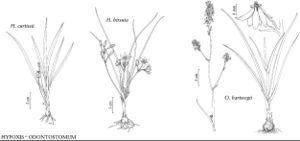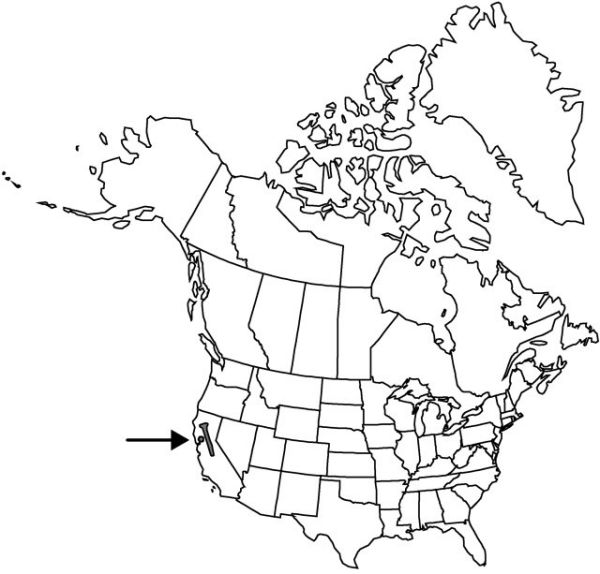Odontostomum hartwegii
Pacif. Railr. Rep. 4(5): 150. 1857.
Stems to 5.5 dm. Bulbs subglobose, slightly broader than tall, 1–3 cm wide. Leaves basal and cauline, tapering gradually to attenuate apex; cauline leaves smaller than basal, gradually reduced to bracts subtending panicle branches; blade (6.5–)10–25 × (0.2–)0.5–0.8 cm. Inflorescences 0–4-branched, each branch (1–)5–40-flowered; bracts subulate, ± equaling pedicels. Flowers: perianth creamy white to yellowish; perianth tube 4–6 mm, limb lobes ca. as long; outer 3 tepals 5–7-veined, ± lanceolate, apex acute; inner 3 tepals 3–5-veined, ± oblanceolate, apex obtuse; filaments 1–2 mm; staminodes 0.5–1 mm; pedicels 3–5 mm. Capsules ca. 4 mm wide.
Phenology: Flowering spring (mid Apr–mid Jun).
Habitat: Grassland, savanna with blue oak (Quercus douglasii Hooker & Arnott) or digger pine (Pinus sabiniana Douglas ex D. Don), usually in well-drained, rocky clay soils (often serpentine), but sometimes on vernal pool margins
Elevation: 0–600 m
Discussion
Odontostomum hartwegii ranges from Shasta County south to Mariposa County along the Sierra foothills, and locally in the Coast Ranges in Tehama and Napa counties. It is more frequent in the northern portion of this range, from Butte to Shasta counties.
Selected References
None.

